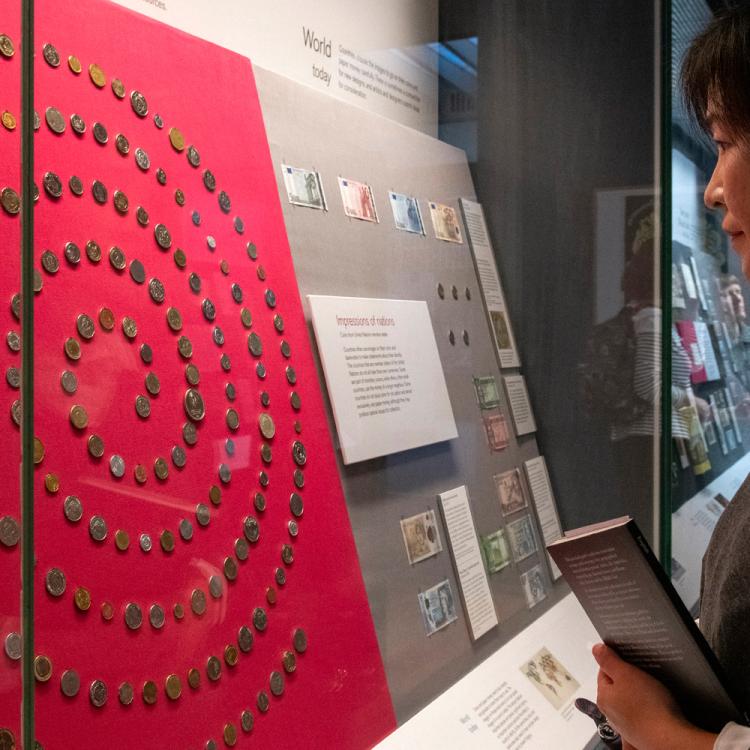Visiting the gallery
Opening times
Daily: 10.00–17.00
See full opening hours
Advance booking advised
Gallery audio guides
Listen on the Audio app, available on the App Store and Google Play.
The history of money can be traced back more than 4,000 years.
During this time, money has taken many different forms, from coins to banknotes, shells to mobile phone payments.
This gallery displays the history of money around the world. From the earliest evidence to the latest developments in digital technology, money has been an important part of human societies. Looking at the history of money gives us a way to understand the history of the world.
Take a virtual tour
Explore Room 68 to see the different forms money has taken through the centuries.
Gallery facts
From the earliest evidence, to the latest developments in digital technology, money has been an important part of human societies.
Cities and empires traded without using coins for over 2,000 years.
As well as having purchasing power, coins also have the power to send messages through the images or writing on them.
New technologies during the industrial revolution enabled increased production of coins, and developments in banking led to a greater use of paper money.
Gallery facts
The idea of borrowing money is as old as money itself. Although sometimes criticised, borrowing has in many countries become a normal part of the way people manage their money.
There has been a huge rise in consumer credit in the modern world, and many people use borrowed money alongside cash as a way to make payments.
Accessibility
- A large print guide is available.
- Tactile and braille guide available.
- Some objects in this collection feature on the British Sign Language multimedia guide. This resource is temporarily unavailable. You can access a selection of BSL films on your own device.
- Some objects in this collection feature on the audio description guide, available on Soundcloud.
- Step-free access.
- View sensory map.
Visit Accessibility at the Museum for more information.






